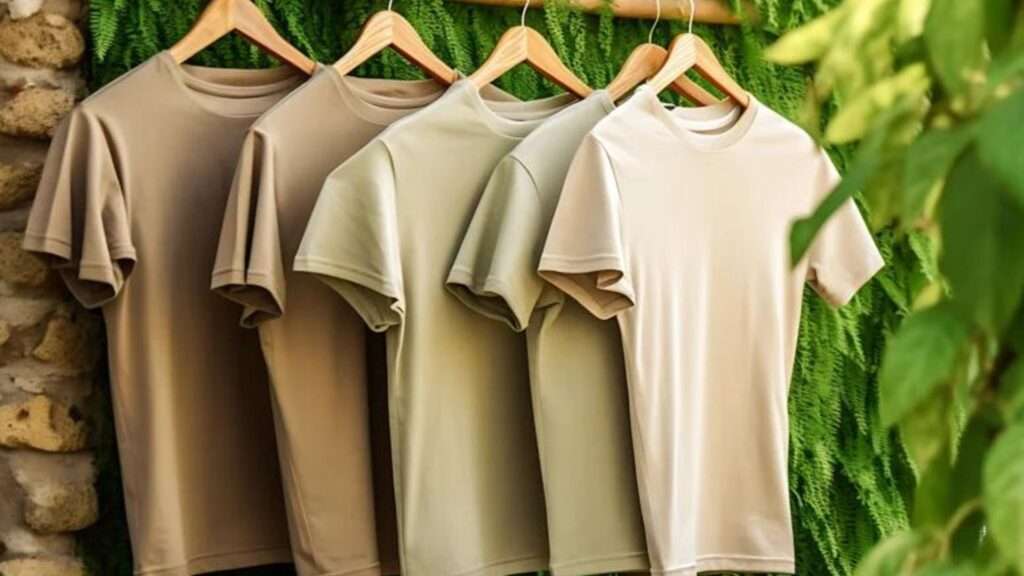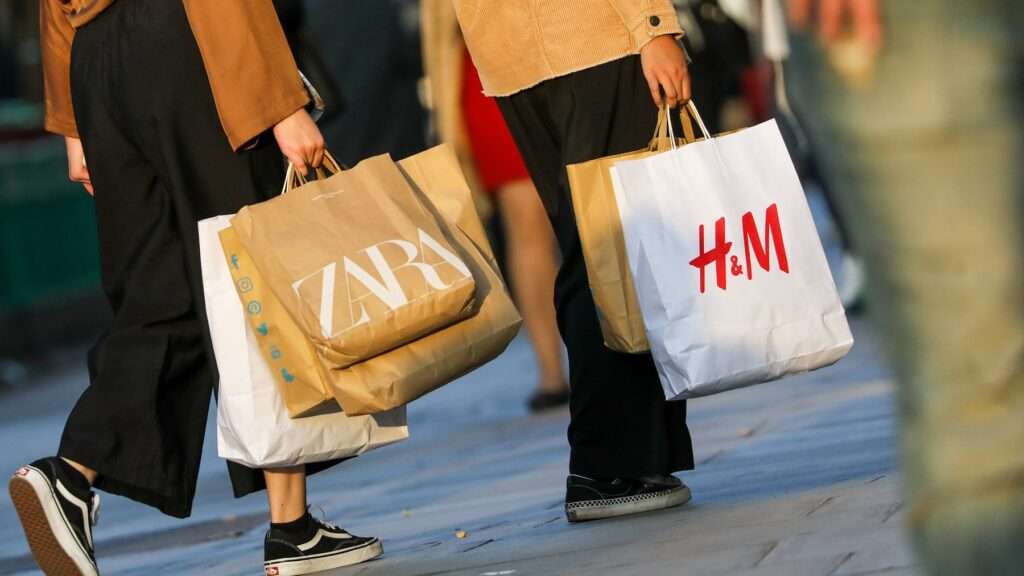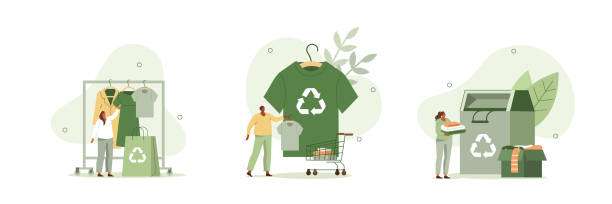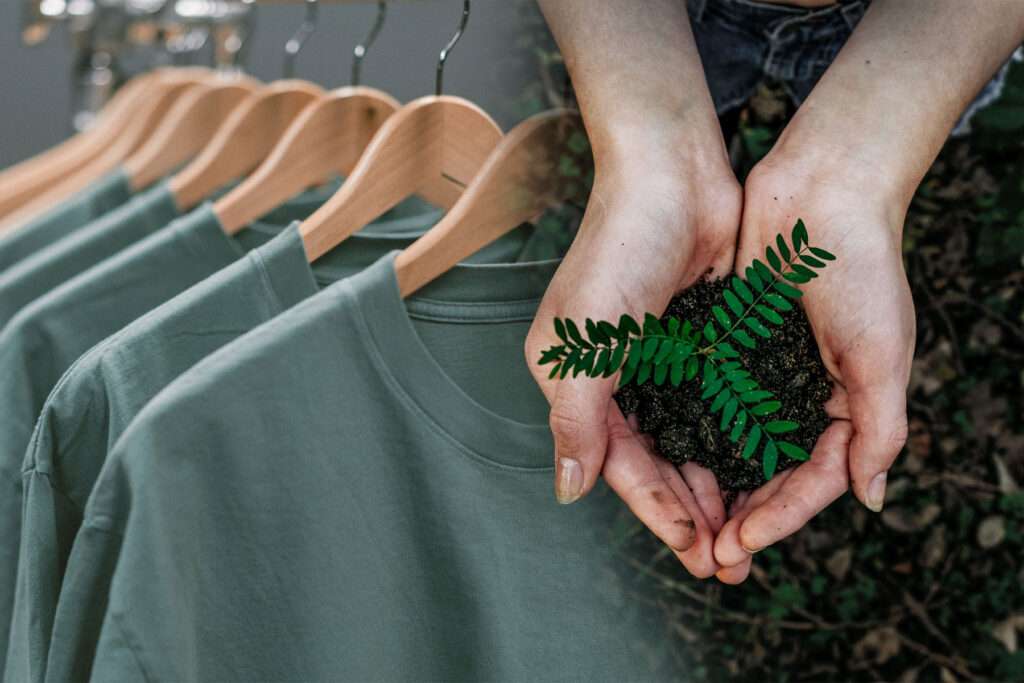
As we step into the new year of 2024, sustainability isn’t simply a marketing gimmick used by brands to quiet the cries of ethically and environmentally conscious people protesting against age-old unfair industrial practices. It is not simply an overused trend, it is serious business now. With the industry responsible for a shocking four to 10 per cent of global greenhouse gas emissions every year, bringing about more serious changes is essential.
The main aim of this initiative is to reduce the mass ecological footprint. Shopping for items labelled ‘sustainable’ is not enough; we need to completely rethink our purchasing habits and the way we consume clothes.
Table of Contents
What does ‘Sustainability in Fashion’ even signify?

Sustainability in this industry isn’t simply clothing made up of biodegradable materials, or boycotting sweatshop practices. It is aimed at the bigger goal of the fashion industry’s grip on people and its consequences on our Planet Earth. It encompasses all-inclusive aspects like the following :
Environmental aspects:
- Reducing resource consumption: Minimizing water and energy used in production, dyeing, and finishing. Sourcing materials with lower environmental footprints (organic cotton, recycled fabrics, etc.).
- Pollution control: Employing cleaner production methods, reducing toxic chemicals and dyes, and treating wastewater effectively.
- Waste reduction: Designing for longevity and durability, promoting garment repair and reuse, and exploring biodegradable materials.
- Circular economy: Creating closed-loop systems where garments are recycled or upcycled after their use, minimizing the need for virgin materials.
Social aspects:
- Ethical labour practices: Ensuring fair wages, safe working conditions, and respect for workers’ rights throughout the supply chain. Avoiding forced labour and child labour.
- Empowering communities: Supporting local craftsmanship and ethical sourcing from developing countries, promoting fair trade practices.
- Transparency: Brands disclosing their supply chain practices, materials used, and environmental and social impacts.
Overall, sustainable fashion emphasizes:
- Long-term thinking: Considering the full lifecycle of a garment, from material sourcing to end-of-life.
- Balance: Addressing both environmental and social concerns.
- Innovation: Finding new materials, production methods, and business models that are more sustainable.
Legislative Changes in Fashion Laws

There has been a glaring lack of laws enabling standardized sustainability practices in the fashion industry for a while now. Existing practices are unregulated, with rules not written well enough to incorporate environmental considerations. There is a need to put a stop to the ‘Greenwashing’ policy used by brands to feign sustainable practices through fake policies. Campaigners have talked about the need for legislation for years, and finally, the industry is on the right track to change, through provisions provided by the EU. Two of these recent provisions were-
Targetting marketing strategies –
Any fake advertising, that makes false promises to spectators will be legally banned now, after final approval for the law in 2024. Officially, it is known as the Green Claims Directive. Product features and claims need to be transparent in their scientific policies and accountable for feedback. This will largely improve consumer experiences and reduce wastage.
Textile recycling –
It falls under the EU Strategy for Sustainable and Circular Textiles. Experimentation in textiles has grown with advancements in technology. Rules were laid out earlier this summer. By 2025, member countries need to have textile waste collection systems in place, while brands and retailers will be responsible for bearing the costs. Even more urgently, eco-labelling will be mandatory by the end of 2024. 2030 goals will be supporting ethical workplace policies and job jurisdictions, activities in 2024-25 include lower-impact circular synthetic fills, certified ethical down and feathers, animal wool alternatives, and plant-based fibre insulations.
This will prove to be a major landmark in pro-environmental practices in the coming years.
Abandoning Fast Fashion in 2024

A staggering 100bn garments are being produced globally every year. Fast fashion has its claws sunk deep in a generation that lives on social media. Constantly changing trends have a grip on people’s wallets, and the fast fashion market is poised for growth, approaching nearly USD 200 billion by 2027.
Amancio Ortega, ZARA founder and Inditex owner, may have been demoted to 12th place on the World’s Richest list (he reached the number 1 spot in 2017). Yet shares of ZARA’s parent company just reached their highest levels ever.
Upcycling And Resale
The Upcycling trend is here to save the day. Since there is an abundance of raw materials, upcycling has been encouraged by the EU as the most cost-effective way of sustainable fashion. Brands like Doodlage, Rassleela, The Second Life and Patch over Patch are among the pioneers of upcycling.

The regeneration of vintage clothing is a trend that we hope stays forever. As a conscious consumer, it is ideal to reduce the circulation of fast fashion. Resale and repurposing of previously owned items extend the lifespan of clothes, limiting the unnecessary waste that fashion is infamous for. Sites such as The RealReal, Vestiaire Collective and Depop enable secondhand and vintage shopping.
Escaping the facade of ‘Greenwashing’
About 40% of the textile, garment and shoe industry could be possibly making false claims. Greenwashing is a strategy used by brands using vague, misleading or false claims to suggest it’s more eco-friendly than it actually is. Brands including Mango Committed, H&M Conscious, Zara Join Life and Decathlon Eco Design are under the greenwash danger zone. Only four of 14 major brands have actually worked towards keeping global warming below 1.5 degrees Celsius.
Using Appropriate Materials
Virgin synthetics such as polyester, which makes up 55% of clothes globally, are derived from fossil fuels and take years to break down. Organic materials approved by globally set standards should be opted for. To find out if brands are serious about reducing their environmental impact, a good place to start is checking whether they have committed to scientific targets.
Transparency in Labour Laws
The pandemic has highlighted the extreme difficulties faced by supply chain and garment workers around the world. Workers were being treated unfairly, with unfair wages, and workplaces had glaring gender gaps and adverse environmental conditions. The people who make our clothes must be paid a fair wage and have safe working conditions.
Conclusion

Sustainable fashion is our only respite in a world with an evergrowing landfill of cloth wastage. With initiatives like ethical consumer practices, transparency and eco-conscious choices, the fashion landscape is transforming to offer a promising future for sustainability in fashion.

Заказать двери на заказ в Москве
Производство дверей на заказ по индивидуальным размерам
Советы по выбору дверей на заказ
Виды и оттенки дверей на заказ
Услуги по доставке и установке дверей на заказ
Какие двери на заказ лучше выбрать? варианты дверей на заказ
Ламинированные двери на заказ: преимущества и недостатки
Железные двери на заказ: надежность и безопасность
Какие двери на заказ выбрать для дачи?
Лучшие двери http://mebel-finest.ru/.